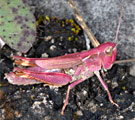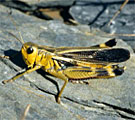Conocephalus fuscus (Fabricius, 1793)
![Conocephalus fuscus: Male (Memmingen, S-Germany) [N] Conocephalus fuscus: Male (Memmingen, S-Germany) [N]](thumbs/tettigoniidae/fuscus_m.jpg)
![Conocephalus fuscus: Male (Memmingen, S-Germany) [N] Conocephalus fuscus: Male (Memmingen, S-Germany) [N]](thumbs/tettigoniidae/fuscus_m2.jpg)
![Conocephalus fuscus: Female [N] Conocephalus fuscus: Female [N]](thumbs/tettigoniidae/fuscus_w.jpg)
![Conocephalus fuscus: Female (Memmingen, Southern Germany) [N] Conocephalus fuscus: Female (Memmingen, Southern Germany) [N]](thumbs/tettigoniidae/fuscus_w08.jpg)
![Conocephalus fuscus: Female larva (Memmingen) [N] Conocephalus fuscus: Female larva (Memmingen) [N]](thumbs/tettigoniidae/fuscus_larvew.jpg)
![Conocephalus fuscus: Habitat in the northern foreland of the Alps (Memmingen, river Iller, June 2012) [N] Conocephalus fuscus: Habitat in the northern foreland of the Alps (Memmingen, river Iller, June 2012) [N]](thumbs/tettigoniidae/fuscus_h2012.jpg)
![Conocephalus fuscus: Habitat in the northern foreland of the Alps (Memmingen, river Iller, June 2012) [N] Conocephalus fuscus: Habitat in the northern foreland of the Alps (Memmingen, river Iller, June 2012) [N]](thumbs/tettigoniidae/fuscus_2h2012.jpg)
Nutrition:
Both carnal and vegetable food (grasses, sedges, insects).
Habitat:
Conocephalus fuscus colonizes little mowed wetlands, sedge reeds, siltation vegetation, ditches and similar places. In lowland, warm and more atlantic regions with high air moisture Conocephalus fuscus inhabits often also mesophilic or even dry grass and forb communities.
Life cycle:
The eggs overwinter according to literature once and are deposited in the soil or into grass sheaths or stems. The adults occur from July to October.
Endangerment: regionally endangered or decreasing
Endangerment factors:
Wetlands are becoming increasingly rare and are destroyed through drainage, overbuilding or intensification (corn fields!). But overall, Conocephalus fuscus is regional still quite common, as it is one of more modest wetland inhabitants.
Remarks:
The distribution extends from Portugal across most of Europe (absent from Scandinavia and almost in the entire British Isles except the very south) and temperate Asia to the Amur.
Conocephalus conocephalus | Conocephalus dorsalis


